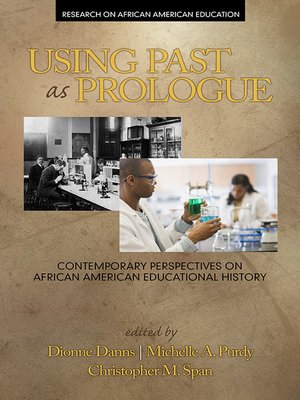Using Past as Prologue
ebook ∣ Contemporary Perspectives on African American Educational History · Research on African American Education
By Dionne Danns

Sign up to save your library
With an OverDrive account, you can save your favorite libraries for at-a-glance information about availability. Find out more about OverDrive accounts.
Find this title in Libby, the library reading app by OverDrive.



Search for a digital library with this title
Title found at these libraries:
| Loading... |
In 1978, V. P. Franklin and James D. Anderson co-edited New Perspectives on Black Educational History. For Franklin, Anderson, and their contributors, there were glaring gaps in the historiography of Black education that each of the essays began to fill with new information or fresh perspectives. There have been a number of important studies on the history of African American education in the more than three decades since Franklin and Anderson published their volume that has pushed the field forward. Scholars have redefined the views of Black southern schools as simply inferior, demonstrated the active role Blacks had in creating and sustaining their schools, sharpened our understanding of Black teachers' and educational leaders' role in educating Black students and themselves with professional development, provided a better understanding and recognition of the struggles in the North (particularly in urban and metropolitan areas), expanded our thinking about school desegregation and community control, and broadened our understanding of Black experiences and activism in higher education and private schools.Our volume will highlight and expand upon the changes to the field over the last three and a half decades. In the shadow of 60th anniversary of Brown v. Board of Education and the 50th anniversary of the 1964 Civil Rights Act, contributors expand on the way African Americans viewed and experienced a variety of educational policies including segregation and desegregation, and the varied options they chose beyond desegregation. The volume covers both the North and South in the 19th and 20th centuries. Contributors explore how educators, administrators, students, and communities responded to educational policies in various settings including K-12 public and private schooling and higher education. A significant contribution of the book is showcasing the growing and concentrated work in the era immediately following the Brown decision. Finally, scholars consider the historian's engagement with recent history, contemporary issues, future directions, methodology, and teaching.






